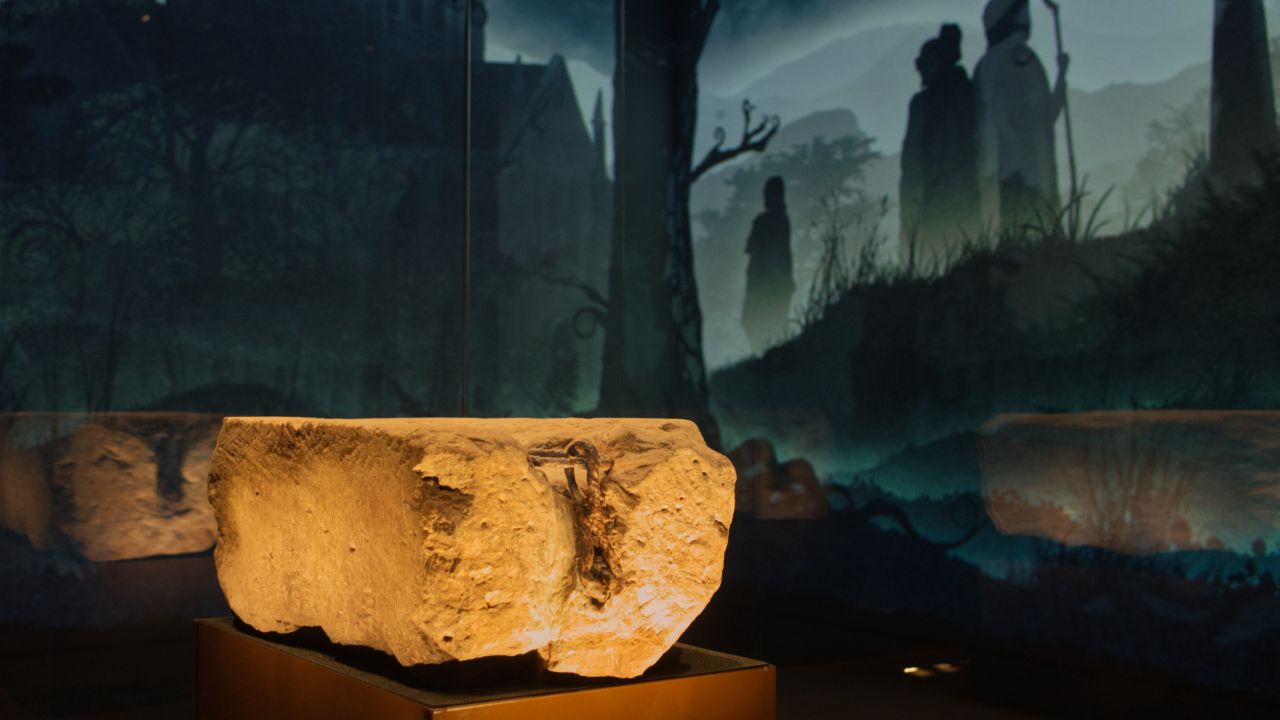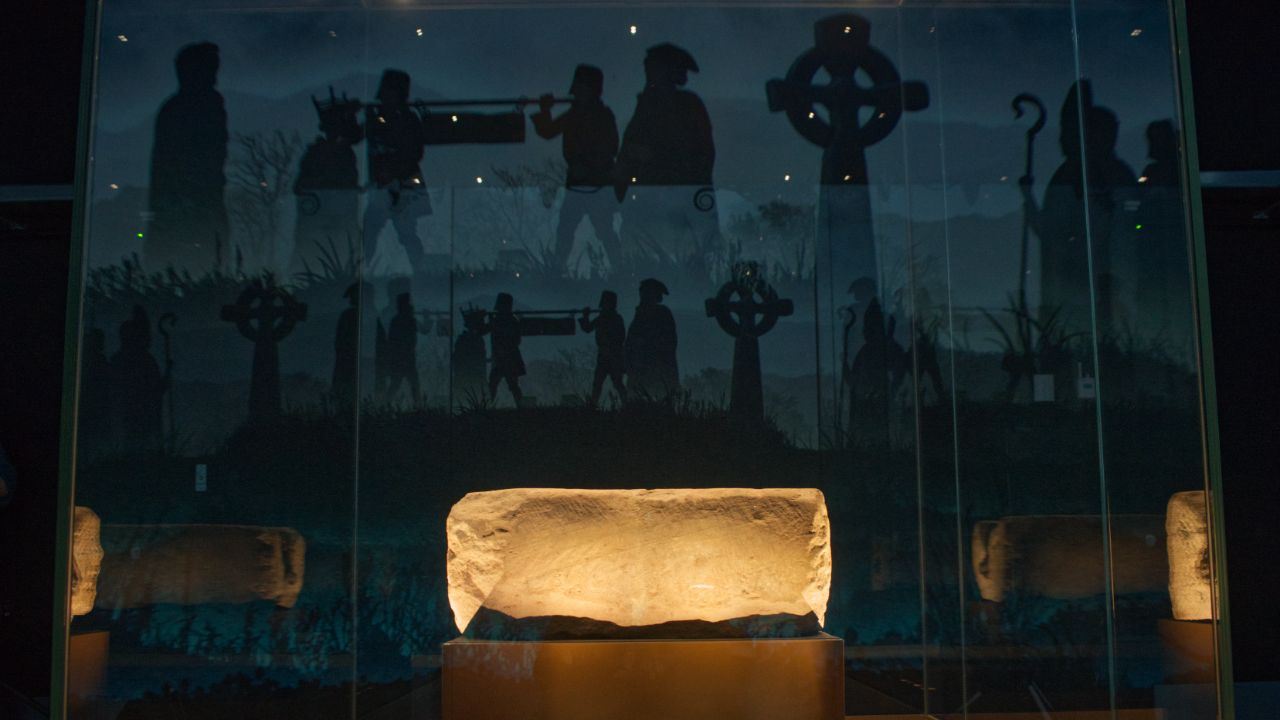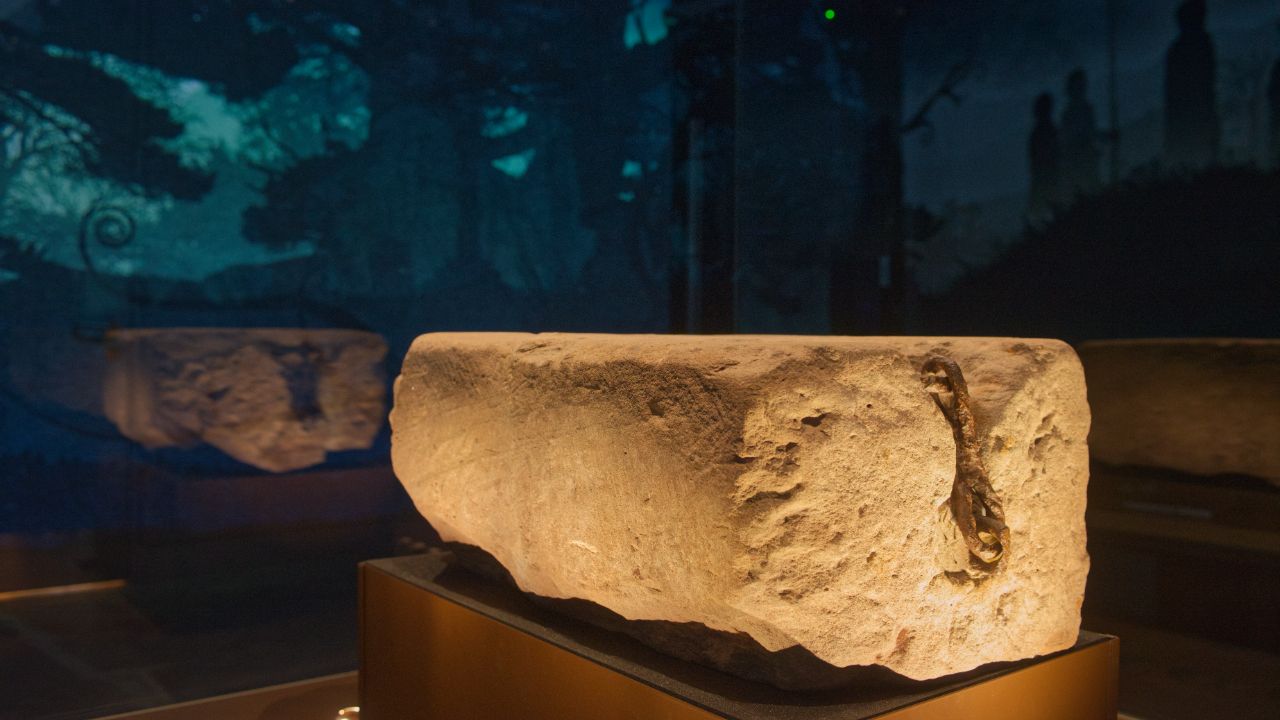Plan Your Visit
Everything you need to make the most of your day at the Home of Destiny.
Enter a search term above to search our website
Pages
News
Star Objects
At the heart of Perth Museum lies the Stone of Destiny, also known as the Stone of Scone. The Stone of Destiny is an ancient symbol of Scottish monarchy and kingdom, and an object of utmost importance to both Scotland and the UK. Still used to crown kings and queens of the United Kingdom today – most recently King Charles III in May 2023 – the Stone has returned to its home in Perthshire for the first time in 700 years, and is now available to view for free.
Online pre-booking is no longer required for the Stone of Destiny.
Timeslots can be booked directly onsite at Perth Museum at the front desk.
For groups of larger than 10 people online booking is available and it is recommended to book with two weeks’ notice to secure a slot.
For the safety and security of all, bag checks are in operation for visitors to the Stone of Destiny Experience.
Once you have booked your timeslot, please ensure you arrive at the Stone of Destiny entrance 5 minutes before your allotted time.
Large bags are not permitted in the Museum or the Stone of Destiny Experience, and we request they are not brought inside the Museum for everyone’s convenience and safety.




The Stone of Destiny is an ancient symbol of Scottish monarchy and kingdom. A king-making stone, it was used in the inauguration of Scottish monarchs at Scone, 3 miles upriver of Perth on the River Tay. Its first documented use was in 1249 for the inauguration of the boy-king, Alexander III.
Taken as war loot by King Edward I of England fifty years after Alexander became king, the Stone was carried to Westminster Abbey in London; a symbol of Edward’s victory and his perceived right to rule. Returning home to Perthshire for the first time in 700 years, this iconic artefact is still used to crown kings and queens of the United Kingdom today, including the coronation of King Charles III in May 2023.
Images of the Stone of Destiny, © Culture Perth and Kinross
Pre booking for groups larger than 10 people for The Stone of Destiny Experience is required. Please complete the form below to let us know when your group is coming to visit. More information about planning your visit can be found here.
The Stone of Destiny Experience runs every 10 minutes with the 1st slot beginning at 10:10 and the last slot at 16:40 (18:40 on Thursday late openings).
For comfort we recommend each slot can accommodate 15 people per timeslot. Depending on the size of the group more than 1 slot may be needed. You will receive an email to confirm your booking.
For groups of 10 or more pre booking the Stone Room is required to make your visit run smoothly. Please complete the form below to let us know when you are coming to visit. More information about planning your visit can be found here. The Stone Room runs every 10 minutes with the 1st slot beginning at 10:10 and the last slot at 16:40 and 18:40 on Thursday for late night opening. For comfort we recommend each slot can accommodate 15 people. Depending on the size of the group more than 1 slot may be needed. You will receive an email to confirm your booking.
"*" indicates required fields
Everything you need to make the most of your day at the Home of Destiny.